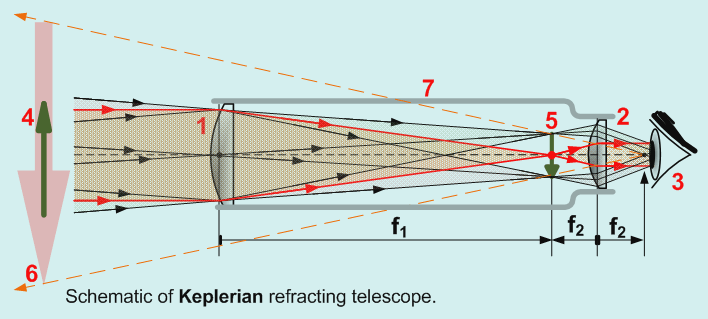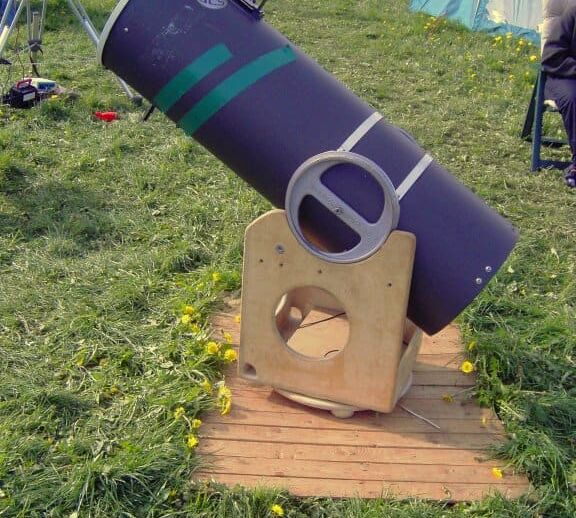Looking at the stars is always exciting. Telescopes are like doors into other Galaxies, stars, and planets thus making it easier to observe the universe properly. Proper telescope choice is another important aspect of stargazing.
Let this telescope guide help you out so that stargazing becomes a better experience for you.
Types of telescopes
Refracting telescopes

Refracting telescopes provide clear and crisp views of heavenly bodies through their lens-based optics. Think about how pleased Galileo was the first time he pointed a telescope at the night sky. They are the most appropriate for people who are starting in astronomy; they are simple to operate and do not require regular maintenance.
Reflecting telescopes

Reflecting telescopes are based on mirrors for image creation, and their construction allows them to have bigger apertures which in turn help capture more light and display dimmer objects hence it is like advancing from using small to larger cosmic lenses that reveal all secrets about the universe.
Difference between Reflector and Refractor telescope
| Feature | Reflecting Telescope | Refracting Telescope |
| Primary Optical Element | Concave mirror that reflects light to a focal point | Convex lens that bends light to a focal point |
| Historical Development | First created by Isaac Newton in 1668 to avoid chromatic aberration seen in refractors | Invented in the early 1600s; Galileo improved the design in 1609 to observe celestial bodies |
| Image Quality | No chromatic aberration, but may have spherical aberration | Possible chromatic aberration due to light refraction through lenses |
| Light Gathering Ability | Better for larger apertures, suitable for faint and distant objects | Limited by lens size, ideal for observing brighter and closer objects |
| Construction and Size | Compact and generally shorter, allowing larger apertures at lower cost | Longer and heavier due to lens structure, with size limitations for larger apertures |
| Maintenance | Requires occasional alignment (collimation) and mirror cleaning | Less maintenance, as lenses are sealed within the tube |
| Cost | Generally more affordable for large apertures | Higher cost with larger apertures due to lens production complexity |
| Usage | Preferred for deep-sky observations (e.g., galaxies, nebulae) | Ideal for planetary and lunar viewing, offering crisp details |
Know how the Telescopes work:
Catadioptric telescopes

Having lenses and mirrors, catadioptric telescopes are tailored for versatility, thus giving a small yet heavyweight package. When it comes to optical observation and astrophotography, telescopes such as the renowned Schmidt-Cassegrain design stand out like none other.
A telescope that is capable of multitasking and that can be altered in line with the conditions is beneficial.
Recommended telescopes
5 best telescopes for astrophotography
- Meade LX200 Series
- Sky-Watcher Evostar Pro Series
- Celestron EdgeHD Series
- Orion Astrograph Refractors
- William Optics RedCat Series
5 best beginner-friendly astronomy telescopes
- Celestron NexStar 130SLT
- Celestron PowerSeeker 127EQ
- Orion SkyQuest XT8
- Meade Instruments Infinity 102mm AZ
- Sky-Watcher Heritage 130P
You can also read Best Telescopes for observing planets and galaxies for a much more detailed guide.
Factors to consider while buying a telescope
Aperture and light gathering
At any given time, the amount of light a telescope collects is determined by its aperture. The image of an object that is too faint can be increased in brightness using a large piece of equipment. Simply put, an aperture is just like having a big eye that is used to watch the dimmest cosmic bodies.
The smaller one’s field of view, then one has an opportunity to see more details within it.
Focal length and magnification
If you know the relationship between focal length and magnification, you can identify a cosmic sweet spot. In other words, when studying these celestial objects, our vision should just be right within a range that is not too narrow or too wide.
Telescope mount types

The most important thing to consider is the stability of your telescope. The Altazimuth mount usually follows the Earth’s pole which makes it capable of being used in shooting images that would require a long time. It normally offers the advantage of simplicity over the equatorial when it comes to viewing images through an eyepiece.
What we mean is that this is just as important as choosing the appropriate mode of transport because in both scenarios stabilization ensures comfort.
How to maintain a telescope?
A delicate touch is important when it comes to cleaning and maintaining a telescope optics. Dust can be removed without causing scratches by using a soft brush and breathing gently. It is the regular maintenance of your telescope that will guarantee that it remains performing at its best as it goes through the cosmos.
Keeping telescopes safe from environmental hazards during storage and transportation is very important. Buy strong carrying bags as well as protective covers for your star-gazing partner.
Budget considerations
If you are an amateur astronomer or someone interested in taking up astrophotography as a hobby, then rest assured because there are many affordable telescopes.
For instance, there is Celestron’s AstroMaster series which starts at just under $200 while The Orion SkyScanner series, though marketed at about $199.99+, is still cost-effective, allowing one to start studying stars right from Earth.
Conclusion
Observing the stars and photographing space is not just a scientific occupation but also a delightful hobby. Whether you’re capturing distant galaxies or observing the planets, it is necessary to choose an appropriate telescope and accessories.
Interacting with the astrophotography community will turn your cosmic hobby into a social one. Online forums, workshops, and local astronomy clubs are good for sharing experiences, seeking advice, making good friends as well as admiring the wonders of the universe together.

